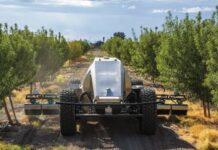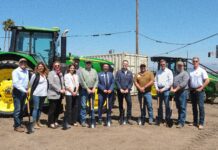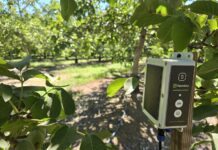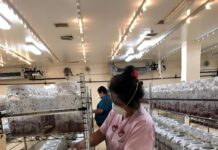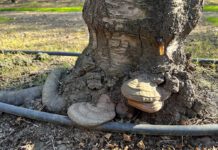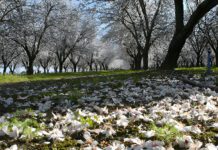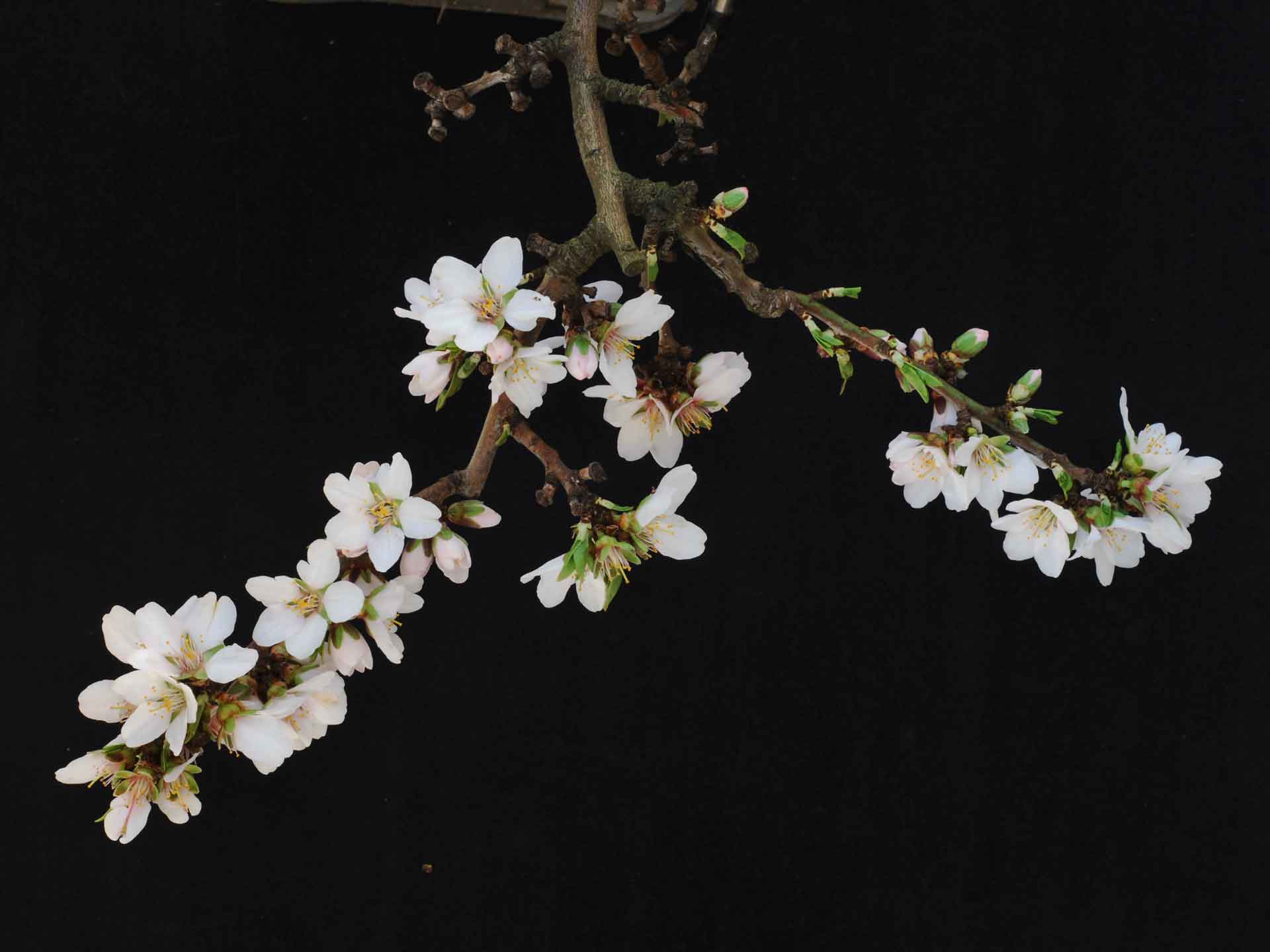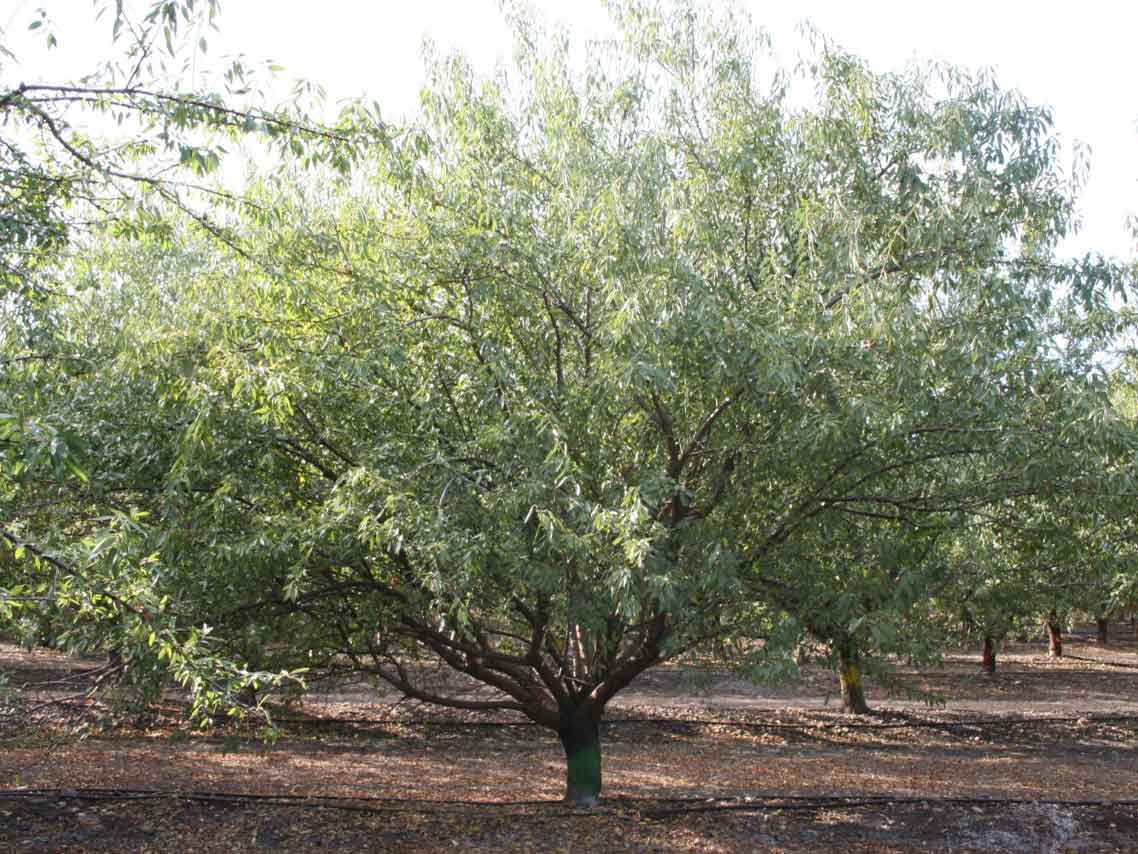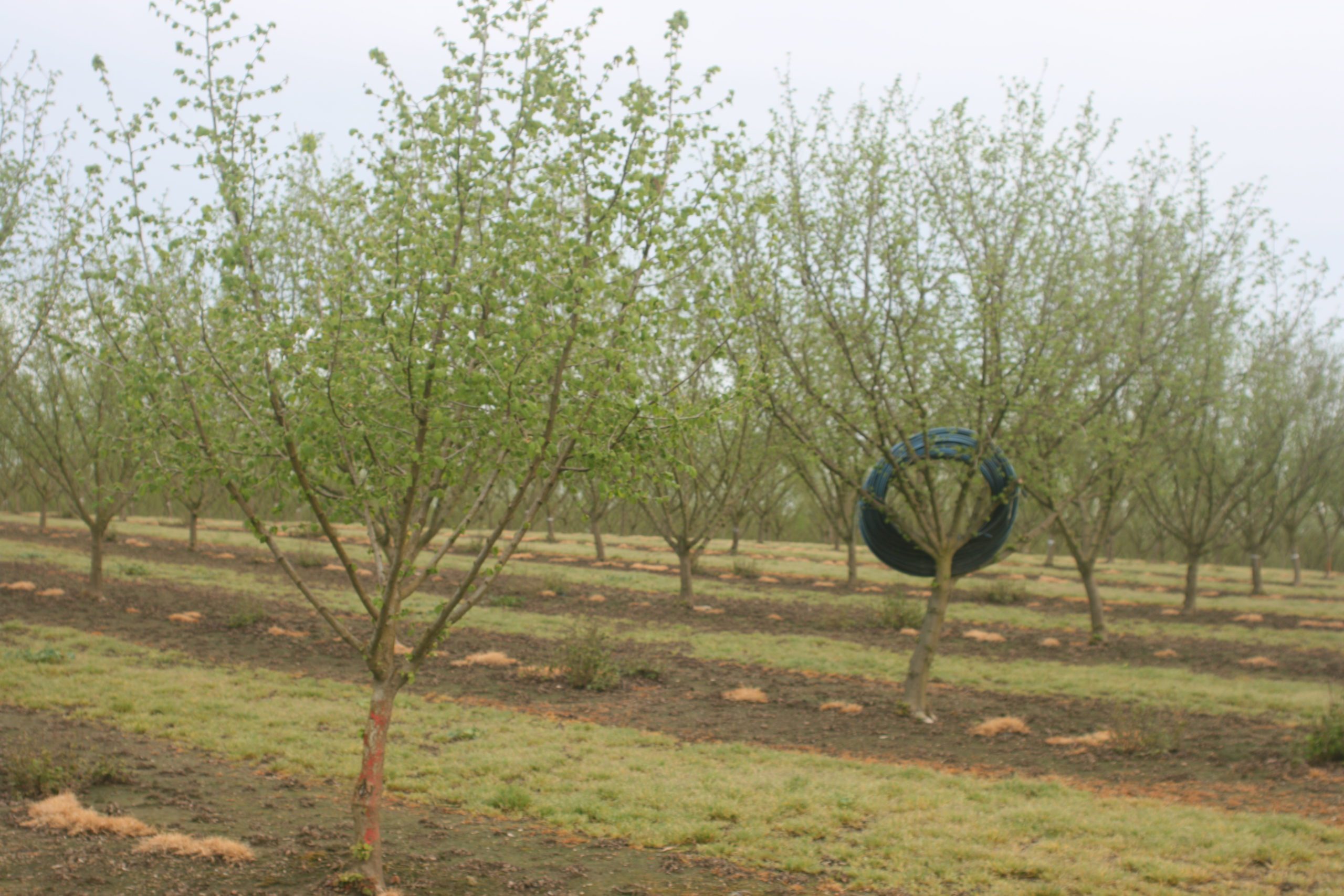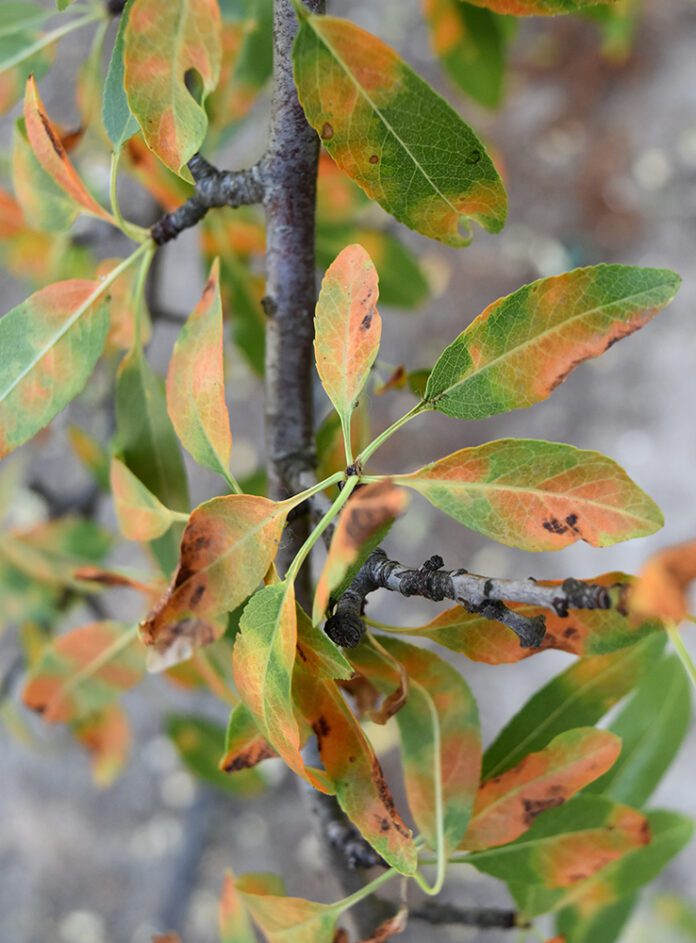
Listen to the audio version of this article. (Generated by A.I.)
Last year’s outbreak of red leaf blotch (RLB) disease in four northern San Joaquin Valley counties turned out to be a warning shot. UC researchers, PCAs and growers are now reporting a serious spread of this aggressive fungal disease in a much larger area.
“Weather conditions were optimal this spring for a significant outbreak,” Florent Trouillas, a UCCE fruit and nut pathology specialist at the Kearney Agricultural Research and Education Center, said.
“This is an aggressive pathogen in all California almond cultivars,” he added. “We have seen orchards where 100% of the trees have 100% infected leaves. It is widespread in California and is here to stay.” Trouillas predicted that RLB will likely become the focus in almond disease management strategies, integrated with management of rust, scab and shot hole.
Disease Presence and Spread
Last year, RLB was identified in almonds for the first time on May 29 in Merced County. It was also found last year in Fresno, Madera, San Joaquin and Stanislaus counties. Trouillas predicted then that the infections were likely to increase across a wider area the next year. He reported in June 2025 that an additional 40 orchards were found to be infected with RLB. The disease is now being reported in Colusa, Sutter, Butte, Yolo, Fresno, Kings, Tulare, Merced, Madera, Stanislaus and San Joaquin counties. It has been found in most almond cultivars. Growers and PCAs should be on the lookout for this disease in their orchards during June and July.
RLB is caused by the fungal pathogen Polystigma amygdalinum. Prior to the California outbreak, it was known as a disease affecting almond production in the Mediterranean basin, Spain and regions of the Middle East. Last year, Trouillas speculated that the disease was introduced into California on infected plant material.
This disease has one primary infection cycle. The inoculum comes from sexual fruiting bodies on fallen infected leaves from the previous growing season. The infection begins after petal fall when young leaves begin to emerge from vegetative spurs. Rain does not seem necessary for the release and dispersal of fungal spores. After that first infection cycle, the inoculum remains dormant on leaf litter until it is dispersed during the next growing season, mainly from mid-January to the end of May.
RLB causes premature defoliation. In the early stages of the disease, small, yellowish spots or blotches appear on both sides of leaves. Over time the blotches increase in size and color changes to a reddish with a brown center as the disease progresses.
In advanced stages of the disease, which are highly visible, the leaves become necrotic, curl and drop. The inoculum remains in the leaf litter on orchard floors and can reinfect next year’s new leaf growth. Premature defoliation affects photosynthesis and can impact next year due to reduction of carbohydrate reserves in the tree.
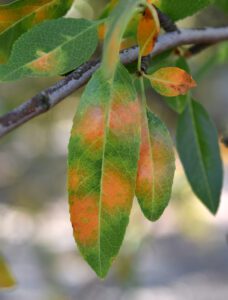
Management and Research Response
One of the first orchards diagnosed with RLB in 2024 was managed by Merced PCA Gary Gliddon.
“When the blotches were first noticed, we thought it was herbicide damage,” Gliddon said. As the infection spread, he realized it was an infection and called in UC advisors. This year, that orchard is being used for a fungicide trial by the Trouillas lab to determine the most effective material.
Last year, he said, the affected trees had lost a lot of foliage by harvest time. Crop yields were not affected. This year, he said the orchards with RLB appear to have a similar size crop, but a second year of defoliation may affect production.
Gliddon said he is seeing some highly infected orchards this year and is concerned about the spread. The disease may have been present in 2023, he surmised, and that could account for the rapid buildup in the orchards.
RLB infections become noticeable on almond tree leaves in early May, long after any preventative measures can be effective.
Timed, preventative fungicide applications are the recommendations from Trouillas. Gliddon said his growers used a variety of fungicide products and while some were effective, others were not. This disease is controlled with a preventative fungicide application at petal fall and two to three additional applications at two and five weeks after petal fall if wet and cool weather persist into March.
Trouillas said most almond growers focus on bloom sprays to prevent other fungal diseases. In recent years, they may also have reduced their number of fungicidal sprays for economic reasons. Preventing outbreaks will require a post-petal fall application with specific FRAC numbers to target the pathogen.
At the Almond Board’s June Production Research event, Trouillas said there is a paradigm shift in integrated pest management strategies for RLB: to integrate RLB management with management for scab, shot hole and rust. Mixed fungicides from FRAC groups 3+7, 3+11, 7+11 and FRAC 3 triazoles are most effective in controlling RLB. Trouillas advised using these combinations smartly and alternating active ingredients to avoid development of fungicide resistance.
Research is ongoing in the Trouillas lab to determine the optimal number of fungicide applications, but at least two to three applications will be required between petal fall (early to mid-March) and five weeks post-petal fall (mid to late April) for effective management. Fungicides applied during bloom and after symptoms are visible are not effective.
Cultural practices focused on eliminating the primary inoculum of infected leaves can help mitigate the disease. Zinc sulfate to hasten leaf fall, removing leaf litter or applying urea to accelerate leaf decomposition are control strategies, but Trouillas stressed that these strategies are only effective when applied over a wide area.
Almond Board of California is asking growers who suspect RLB in their orchard to avoid collecting leaf samples and transporting them to reduce the potential spread of the pathogen to uninfected areas. Growers who suspect the disease in their orchards are urged to contact their local UCCE farm advisor. Early detection and management are vital to protecting California’s almond industry from this new threat.

Cecilia Parsons
Cecilia Parsons has lived in the Central Valley community of Ducor since 1976, covering agriculture for numerous agricultural publications over the years. She has found and nurtured many wonderful and helpful contacts in the ag community, including the UCCE advisors, allowing for news coverage that focuses on the basics of food production.
She is always on the search for new ag topics that can help growers and processors in the San Joaquin Valley improve their bottom line.
In her free time, Cecilia rides her horse, Holly in ranch versatility shows and raises registered Shetland sheep which she exhibits at county and state fairs during the summer.


